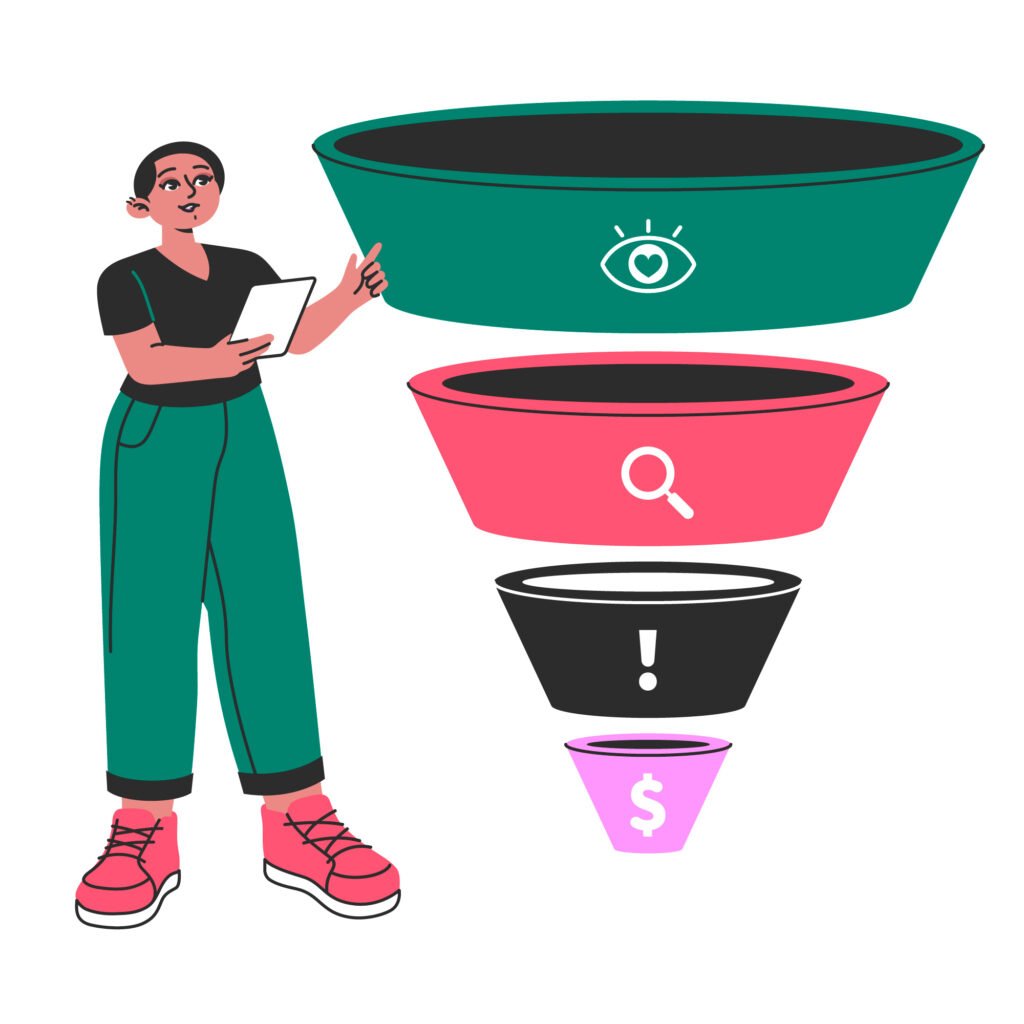Selling Online: Advanced E-commerce Strategies

Introduction:
The Evolving Landscape of Online Sales
In today’s fast-paced digital world, having an online store or selling on platforms like Amazon, Etsy, or Flipkart isn’t enough. The e-commerce landscape is evolving rapidly, with changing consumer behaviours, advanced marketing techniques, and platform algorithms shaping the way businesses operate. Whether you’re managing your own website or selling on third-party platforms, implementing Advanced E-commerce Strategies is key to staying competitive.
If you’ve been following our “Going Online 101” series, you already understand the basics of getting started. Now, let’s take things a step further and explore how you can refine your strategy, leverage data, and maximize your online sales potential.
Cultivating the Right Mindset for Online Selling

Success in e-commerce isn’t just about having great products—it’s about developing the right mindset. The online marketplace is dynamic, with shifting trends, evolving consumer behaviours, and constant platform updates. To build a sustainable business, sellers need resilience, adaptability, and a long-term approach.
What Does It Take to Succeed?
Selling online isn’t a straight path to instant profits. It’s a mix of strategy, persistence, and continuous learning. Understanding the challenges and applying Advanced E-commerce Strategies will set you apart.
How to Stay Resilient & Adaptable?
The digital world moves fast—algorithm updates, policy changes, and supply chain disruptions are all part of the game. The key is to stay flexible.
- Keep up with industry updates through blogs, forums, and platform announcements.
- Have backup plans for disruptions like shipping delays or ad performance drops.
- Be open to experimentation—if one strategy stops working, tweak and test new ones.
Why Continuous Learning Matters?
E-commerce is always evolving. New features, marketing techniques, and shopping behaviours emerge regularly. Sellers who stay informed gain a competitive edge.
- Follow experts, take online courses, and engage with seller communities.
- Experiment with different approaches—what worked last year may not be effective now.
- Stay updated on trends like AI-driven personalization, mobile shopping, and social commerce.
What Customers Expect & Why It Matters?
Customer satisfaction is the backbone of any successful business. A great shopping experience leads to repeat sales, positive reviews, and word-of-mouth marketing.
- Personalize recommendations based on customer behaviour.
- Respond quickly to inquiries and resolve issues professionally.
- Invest in high-quality product images, clear descriptions, and a seamless checkout process.
- Actively seek feedback and use it to improve your offerings.
Patience & Long-Term Thinking Pay Off!
E-commerce isn’t a get-rich-quick scheme. Building a brand, earning trust, and optimizing your sales funnel take time.
- Set realistic goals and track progress rather than expecting overnight success.
- Focus on customer retention—loyalty programs and email marketing help sustain long-term growth.
- Invest in branding, SEO, and organic traffic instead of relying solely on paid ads.
- Treat setbacks as learning opportunities—every challenge is a chance to improve.
Data-Driven Decisions:
Understanding Your Online Customer
Successful online businesses don’t rely on guesswork—they use data to refine strategies, improve customer experiences, and boost sales. By understanding customer behaviour, preferences, and pain points, you can make informed decisions that lead to sustainable growth. Here’s how to leverage data effectively.
Tracking Visitor Behavior with Analytics
Numbers tell a story. Tools like Google Analytics and Heatmaps help you see how visitors interact with your website.

- Identify which pages attract the most traffic and where users drop off.
- Analyze session durations, bounce rates, and click patterns to optimize navigation.
- Use heatmaps to visualize how customers interact with your site—where they click, scroll, and hesitate.
Leveraging Platform-Specific Insights
Every selling platform provides data that can help fine-tune your strategy. Whether you’re on Amazon Seller Central, Shopify Analytics, or Flipkart Insights, these tools offer valuable information on:
- Sales trends and seasonality
- Product performance and bestsellers
- Customer preferences, repeat purchases and return reasons
Regularly analyzing these metrics allows you to stock smarter, price effectively, and improve product positioning.
Testing What Works with A/B Experiments
Not sure which product image, description, or price works best? A/B testing can provide clarity.
- Test different product titles, images, and layouts to see what engages customers more.
- Compare pricing models—offering discounts versus value bundles—to identify the most profitable approach.
- Experiment with call-to-action buttons, checkout flows, and ad creatives to boost conversions.
Building Customer Personas for Personalization
Understanding your ideal customer helps you market more effectively. Instead of targeting everyone, create detailed customer personas based on:
- Demographics (age, location, income level)
- Shopping behaviour (preferred platforms, purchase frequency)
- Pain points and motivations (why they buy, what problems they need to be solved)
A well-defined persona, combined with Advanced E-commerce Strategies, enables personalized marketing, leading to higher engagement and customer loyalty.
Optimizing for Conversions: From Clicks to Sales
Getting traffic is one thing; turning visitors into paying customers is another. Conversion Rate Optimization (CRO) focuses on streamlining the buying process.
- Identify where users drop off in your sales funnel and eliminate friction points.
- Improve product descriptions, checkout experience, and payment options to reduce cart abandonment.
- Use customer feedback to address hesitations and optimize trust signals (reviews, guarantees, secure payment badges).

Advanced Marketing Techniques:
Driving Targeted Traffic
Attracting the right audience is just as important as having a great product. Advanced marketing strategies help reach high-intent buyers by combining SEO, paid advertising, influencer marketing, email campaigns, and content marketing.
SEO enhances product visibility by using long-tail keywords, schema markup for rich snippets, and internal linking to improve navigation. A mobile-friendly and fast-loading site is essential, as most online shoppers browse on mobile devices.
Paid advertising accelerates exposure through Google Shopping Ads, Facebook and Instagram Ads, and platform-specific options like Amazon Sponsored Products. Retargeting campaigns re-engage past visitors, increasing conversion chances.
Influencer and affiliate marketing expand reach by leveraging niche content creators. Partnering with micro-influencers or setting up an affiliate program encourages authentic product promotion. User-generated content, such as reviews and testimonials, enhances credibility and social proof.
Email marketing automation nurtures leads through personalised recommendations, abandoned cart reminders, and loyalty programs. Segmenting audiences based on shopping behaviour ensures relevant messaging and higher engagement.
Content marketing strengthens brand authority and attracts organic traffic. Blog posts, product comparisons, and video tutorials educate potential buyers, while social media engagement fosters brand connection. Encouraging user-generated content builds trust and boosts visibility.
A multi-channel approach, backed by Advanced E-commerce Strategies, ensures long-term success.. By combining these strategies and continuously analyzing performance, businesses can drive consistent, high-quality traffic and improve conversions over time.
Maximising Your E-commerce Presence
(Websites & Platforms Specific)

Whether selling through your own website or an established marketplace, optimizing your online presence is key to driving sales and customer engagement. Here’s how to make the most of both approaches.
Optimizing Your E-commerce Website
A well-optimized e-commerce website enhances user experience, builds trust, and improves search rankings.
1. Website Performance & User Experience
Fast-loading speeds, mobile responsiveness, and intuitive navigation are essential. A slow or difficult-to-navigate website leads to high bounce rates and lost sales. Optimizing images, using a Content Delivery Network (CDN), and streamlining code can significantly boost performance.
2. Seamless Payment & Security
Offering multiple payment options—including credit/debit cards, digital wallets, and BNPL (Buy Now, Pay Later) services—caters to different customer preferences and reduces cart abandonment. Security measures such as SSL encryption, fraud detection tools, and compliance with data protection regulations build customer trust and protect sensitive information.
3. Content & Customer Engagement
Regularly updating product listings, blogs, and promotions keeps the website fresh and relevant, driving organic traffic. A well-maintained content strategy, including FAQs and detailed product descriptions, improves customer confidence and conversions. CRM systems further enhance engagement by personalizing communication, tracking interactions, and rewarding loyalty.
Succeeding on E-commerce Platforms
For those selling on marketplaces like Amazon, Flipkart, or Etsy, success depends on understanding platform algorithms, optimizing listings, and leveraging promotional tools.
1. Algorithm & Product Visibility
E-commerce platforms prioritize products based on factors like sales velocity, customer feedback, and fulfilment efficiency. Ensuring consistent sales, maintaining high ratings, and offering fast shipping improves rankings and visibility.
2. Optimized Product Listings
High-quality images, keyword-rich descriptions, compelling bullet points, and competitive pricing make listings more attractive. A/B testing different titles, images, and descriptions can help refine the most effective presentation.
3. Compliance & Promotions
Staying updated with platform policies prevents penalties and visibility drops. Many platforms offer built-in promotional tools—Amazon Lightning Deals, Flipkart Ads, and Etsy Promotions—that can drive additional traffic and conversions when used strategically.
4. Customer Service & Reputation Management
Positive reviews boost credibility and influence buyer decisions. Providing excellent customer service, responding quickly to inquiries, and sending post-purchase follow-ups encourage satisfied customers to leave reviews, strengthening brand trust.
A balanced approach
Optimizing an independent e-commerce website while leveraging marketplace exposure—offers the best of both worlds. By focusing on performance, customer experience, data-driven decision-making, and Advanced E-commerce Strategies, businesses can maximize their online presence and sustain long-term growth in the competitive digital marketplace.
Optimizing the Customer Experience: From Click to Post-Purchase

A seamless and enjoyable shopping experience encourages repeat business and fosters brand loyalty. Every interaction—from browsing to delivery—should be optimized to enhance customer satisfaction.
Personalized & Effortless Shopping
Modern consumers expect tailored experiences. AI-driven recommendations, dynamic pricing models, and personalized product suggestions cater to individual preferences, increasing engagement and conversions. A streamlined checkout process—with guest checkout, saved payment details, and one-click purchasing—reduces friction and prevents cart abandonment.
Customer Support & Post-Purchase Engagement
Trust is built through reliable support and ongoing communication. Offering multiple customer service channels, such as live chat, email, and phone support, ensures prompt issue resolution. Post-purchase engagement through order confirmations, delivery updates, and personalized loyalty rewards helps maintain long-term customer relationships.
Logistics and Fulfillment: Scaling Your Operations

Efficient logistics and order fulfilment are essential for growth. As your business scales, ensuring smooth inventory and shipping management becomes critical.
Inventory & Order Management
Automated inventory tracking helps prevent stockouts and overstocking, ensuring product availability without unnecessary costs. Real-time tracking and accurate stock forecasting allow businesses to stay ahead of demand fluctuations.
Fast & Reliable Shipping
Customers expect multiple shipping options, competitive pricing, and real-time tracking. Partnering with reliable carriers and offering express shipping can improve customer satisfaction. For scalability, outsourcing fulfilment to a Third-Party Logistics (3PL) provider can enhance efficiency, reduce costs, and streamline operations.
Hassle-Free Returns & Exchanges
A clear and customer-friendly return policy builds trust and encourages risk-free purchases. Simplifying the process, providing prepaid return labels, and communicating return policies upfront can reduce friction and improve the overall shopping experience.
Building a Community: Fostering Customer Loyalty

A loyal customer base does more than generate repeat sales—it transforms into a powerful marketing force. Engaged customers actively promote brands through word-of-mouth, social proof, and community interactions.
Building Communities on Social Platforms
Creating dedicated spaces on platforms like Facebook Groups, Discord, and Instagram fosters direct engagement. These communities encourage discussions, deepen brand connections, and make customers feel like valued members rather than just buyers.
Rewarding Loyalty with Exclusive Benefits
Offering special discounts, early access to new products, and personalized incentives encourage long-term retention. Membership programs and subscription-based perks further enhance customer commitment and keep them coming back.
Harnessing the Power of User-Generated Content
Authenticity drives trust. Encouraging customers to share their experiences through reviews, unboxing videos, and testimonials not only enhances credibility but also acts as an organic promotion. Featuring user-generated content in marketing efforts reinforces community engagement and strengthens brand reputation.
Adapting to Trends and Technology: Staying Ahead of the Curve

The e-commerce landscape is constantly evolving, and businesses that embrace innovation gain a lasting competitive edge. Keeping up with emerging trends and integrating new technologies can significantly enhance customer engagement and conversions.
Embracing Industry Shifts
Social commerce, live shopping events, and AI-powered chatbots are redefining online retail. Businesses that incorporate these trends into their marketing strategies can create more interactive and personalized shopping experiences.
Leveraging Cutting-Edge Technologies
Augmented reality (AR) enables virtual try-ons, voice search optimization improves accessibility, and AI-driven personalization tailors shopping experiences to individual customers. Implementing these advancements makes shopping more immersive and convenient.
Cultivating a Mindset of Continuous Learning
Staying updated through industry news, webinars, and hands-on experimentation helps businesses remain adaptable. Those who consistently refine their strategies and embrace change position themselves for long-term success in an ever-evolving market.
Conclusion: The Ever-Evolving Journey of Online Selling
Success in online selling isn’t about a single breakthrough—it’s an ongoing process of learning, adapting, and refining strategies. Whether managing an independent store or leveraging e-commerce platforms, staying informed, embracing data-driven decision-making, and prioritizing customer experience are essential for long-term growth.
By implementing these strategies, monitoring performance, and continuously optimizing your approach, you can build a resilient, customer-centric business that thrives in an ever-changing digital marketplace. The key is consistency, innovation, and a commitment to improvement—because in e-commerce, the journey never truly ends.
Our Blogs
Follow Us On
Share this blog
Author:
Smartphone Photography Tips for Entrepreneurs
1. Lighting: The Key to Professional-Looking Photos
- Use natural light whenever possible – shoot near a window for soft, even lighting.
- Avoid harsh overhead lights that create unflattering shadows. If shooting at night, use a ring light or softbox for better results.
- Golden hour (early morning or late afternoon) provides warm, flattering light for outdoor shots.
2. Composition: Make Your Photos Visually Appealing
- Follow the rule of thirds – position your subject slightly off-center for a balanced look.
- Use leading lines (e.g., roads, shelves, or patterns) to guide the viewer’s eye toward your subject.
- Declutter the background – a clean, simple background helps focus attention on your product or subject.
3. Editing: Enhance Your Photos Like a Pro
Even a great shot benefits from slight enhancements. Use these free or affordable editing apps:
- Snapseed – for quick, powerful adjustments like brightness, contrast, and sharpening.
- Lightroom Mobile – offers professional-level color correction and presets.
- VSCO – great for adding aesthetic filters that match your brand’s style.
- Retouch (by Adobe) – removes unwanted objects or blemishes for cleaner images.
4. Smartphone Camera Settings & Features to Explore
- Use HDR mode for better details in bright or high-contrast scenes.
- Adjust exposure manually by tapping and sliding up/down on your screen.
- Try portrait mode for blurred backgrounds that make products or faces pop.
- Shoot in RAW (if available) for higher-quality edits without losing detail.
When to Invest in Professional Photography
While mobile photography is excellent for daily content and social media, some situations require a professional touch
- Product Launches & E-commerce – High-resolution product images improve credibility and sales.
- Brand Campaigns – Professional photographers ensure consistency and quality across all visuals.
- Headshots & Team Photos – A well-lit, high-quality portrait makes a lasting impression.
By mastering mobile photography, entrepreneurs can create polished, attention-grabbing content on a budget. Know when to DIY and when to call in a pro to maintain a strong visual brand identity.
E-commerce Photography: Meeting Marketplace Standards & Boosting Sales
High-quality product photos are essential for e-commerce success. Each platform has specific guidelines to ensure consistency and professionalism. Following these standards not only prevents image rejections but also improves conversion rates and reduces returns by giving customers a clear, accurate view of what they’re buying.
Platform-Specific E-commerce Photography Guidelines
1. Amazon: Crisp, Clear, and Professional
Amazon prioritizes clean, product-focused images that enhance trust and clarity. Follow these rules to avoid rejections
- White background (RGB 255, 255, 255) – ensures a clean, distraction-free look.
- Minimum resolution: 1000 pixels on the longest side – allows zoom functionality
- Fill at least 85% of the frame – ensures the product is the focal point.
- Multiple angles & close-ups – showcase product details clearly.
Pro Tip: Use a lightbox or soft, even lighting to eliminate shadows and reflections.
2. Etsy: Lifestyle & Storytelling for Handmade & Unique Items
Etsy buyers love authentic, artistic presentations that tell a story.
- Showcase the product in real-life settings – e.g., jewelry on a model or handmade furniture in a cozy home.
- Use warm, natural lighting – creates an inviting feel.
- Offer multiple perspectives – top, side, and detailed close-ups.
- Include scale references – a product next to a familiar object helps buyers visualize size.
Pro Tip: Soft, natural shadows add depth and realism without looking overly edited.
3. Instagram & Social Media: Eye-Catching, High-Resolution Visuals
Social media thrives on bold, engaging imagery that stops the scroll.
- High-resolution images (1080×1080 pixels or higher) – ensures sharpness.
- Creative compositions & storytelling – show the product in use, not just a static image.
- Consistent color grading & branding – create a cohesive feed that enhances brand recognition.
- Use motion & interactive elements – carousels, videos, and GIFs increase engagement.
Pro Tip: Add subtle branding elements like your logo or a signature color scheme for instant recognition.
Why High-Quality E-commerce Photos Matter
Poor-quality images can damage credibility, reduce conversions, and increase return rates. Investing time (or hiring a professional) in well-lit, properly composed, and platform-optimized images leads to:
- Higher click-through rates (CTR) – visually appealing images attract more shoppers.
- Better sales & fewer returns – clear product visuals reduce buyer hesitation
- Stronger brand presence – polished images make your business look more professional.
By aligning your photography with each platform’s standards, you create a trustworthy, conversion-optimized shopping experience that drives sales.
New Trends Shaping Product Photography
Keeping up with trends can give businesses a competitive edge. Here’s what’s making waves:
- Stylized Product Shots: Brands now go beyond plain backgrounds, incorporating vibrant aesthetics.
- Lifestyle Shots: Showcasing products in action helps customers envision usage.
- Using Models for Wearables: Fashion and accessory brands see higher sales when products are displayed on real people.
- 360-degree Photography: Enables interactive shopping experiences, reducing uncertainty for customers.
- Video Content & User-Generated Content: Short clips showcasing products can increase conversion rates by 80%.
Photography Tips & Tricks: Capturing Stunning Visuals Like a Pro
Strong visuals can make or break your brand’s presence. Whether you’re shooting products, portraits, or lifestyle content, mastering lighting, composition, and editing ensures high-quality, engaging images. Here’s how to elevate your photography with practical, easy-to-apply tips.
Lighting
The Secret to Professional-Looking Photos
Lighting sets the mood and enhances details. Use these techniques for well-lit, high-quality images:
- Soft, diffused lighting minimizes harsh shadows – use sheer curtains, softbox lights, or DIY reflectors (white foam boards work great).
- Outdoor shoots? Time it right! – The golden hour (shortly after sunrise & before sunset) offers warm, flattering light. Avoid midday sun to prevent overexposed, harsh shadows.
- For artificial lighting, choose warm LEDs or ring lights – they help maintain a natural look.
Pro Tip: If shooting indoors, position your subject near a window for soft, natural illumination.
2. Composition
Create Visually Appealing Shots
A well-composed photo grabs attention and tells a story. Try these framing techniques:
- Rule of Thirds – Place your subject slightly off-center for a balanced, dynamic shot. Most smartphone cameras have a grid option to guide you.
- Leading Lines – Use roads, railings, or natural patterns to draw the viewer’s eye toward your subject.
- Negative Space – Leaving some empty space around your subject makes it stand out and prevents cluttered images.
Pro Tip: Don’t be afraid to break the rules! Sometimes, asymmetry or unconventional framing adds uniqueness to a shot.
3. Editing
Enhance Without Overdoing It
Post-processing polishes your images and ensures they align with your brand’s aesthetic.
- Use editing apps like Adobe Lightroom, Snapseed, or Canva – adjust brightness, contrast, and sharpness for a clean, professional look.
- Stay true to reality – Avoid heavy filters or over-editing. Authenticity builds trust, especially for product photos.
- Batch edit for consistency – Use presets in Lightroom to maintain a cohesive style across your brand visuals.
Pro Tip: Increase sharpness and clarity slightly for product shots but keep skin retouching minimal for portraits to preserve natural texture.
4. Angles & Perspectives
Experiment for Unique Shots
Your camera angle can dramatically change the feel of an image. Try different perspectives:
- Flat Lays – Best for food, products, and aesthetic compositions. Keep elements arranged neatly for a clean, appealing look.
- Eye-Level Shots – Ideal for portraits and storytelling. Creates a natural, relatable perspective.
- Low & High Angles – Looking up adds power (great for fashion or architecture), while looking down creates an intimate or product-focused effect.
Pro Tip: Take multiple shots from different angles and review them later—sometimes, an unexpected angle works best!
Conclusion: Investing in Your Visual Future
In a digital-first world, photography is an indispensable tool for businesses. Whether through DIY efforts, mobile photography, or professional services, the right visuals can elevate brand identity, boost sales, and enhance engagement.
At Creo Elements LLP, we understand the power of compelling visuals. Looking to transform your brand’s image? Reach out to us today and let’s create stunning visuals that speak for your business!